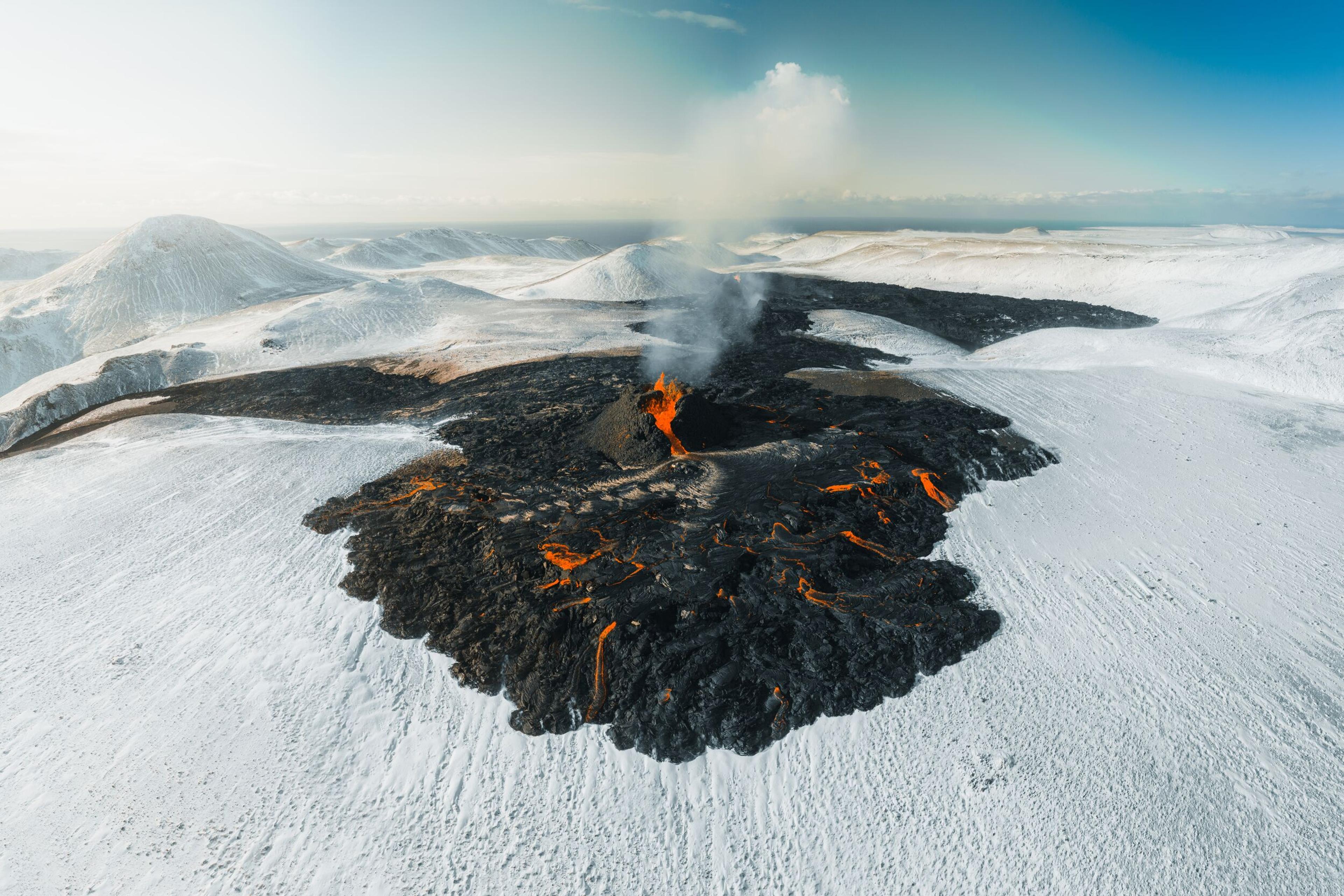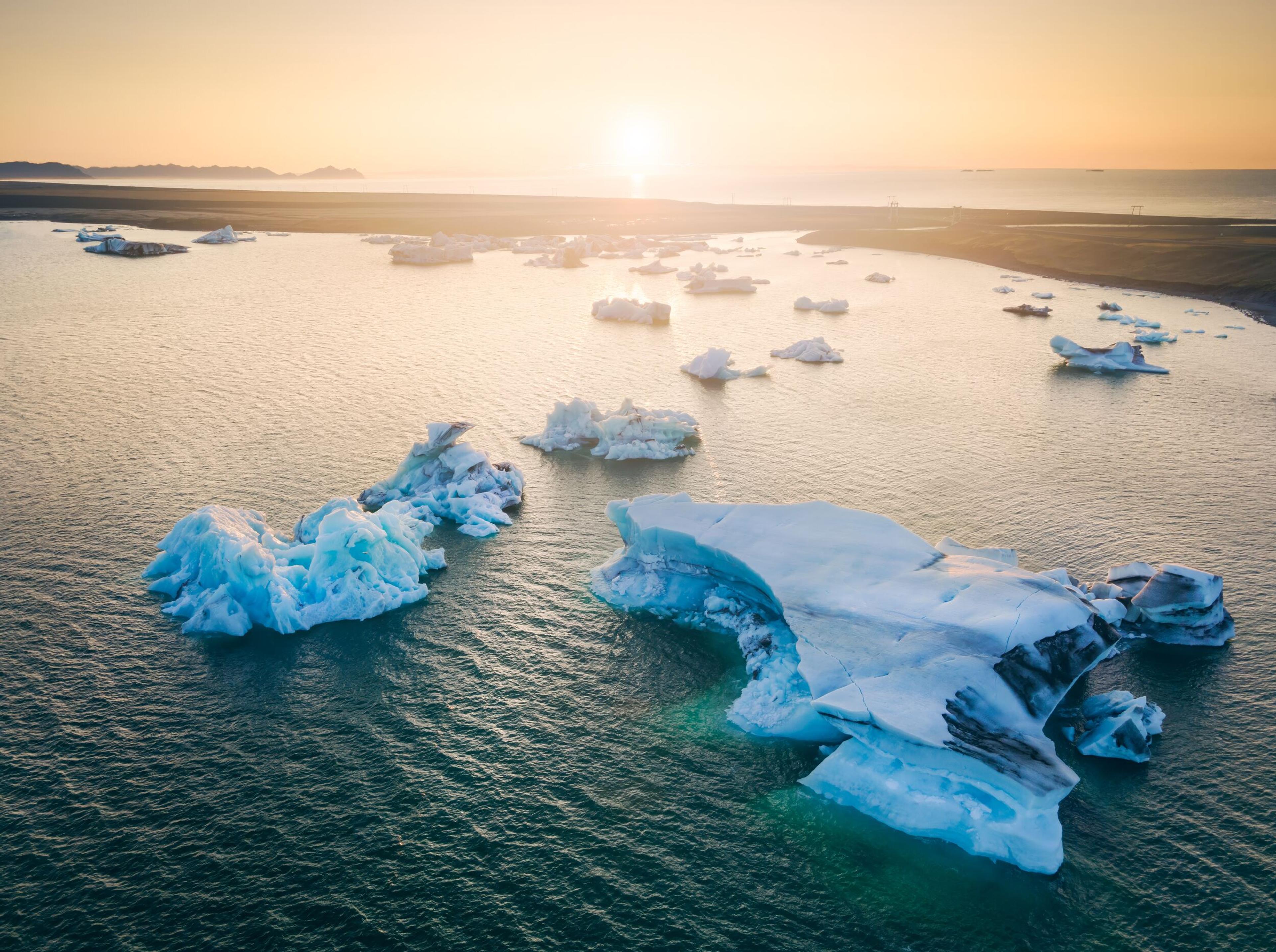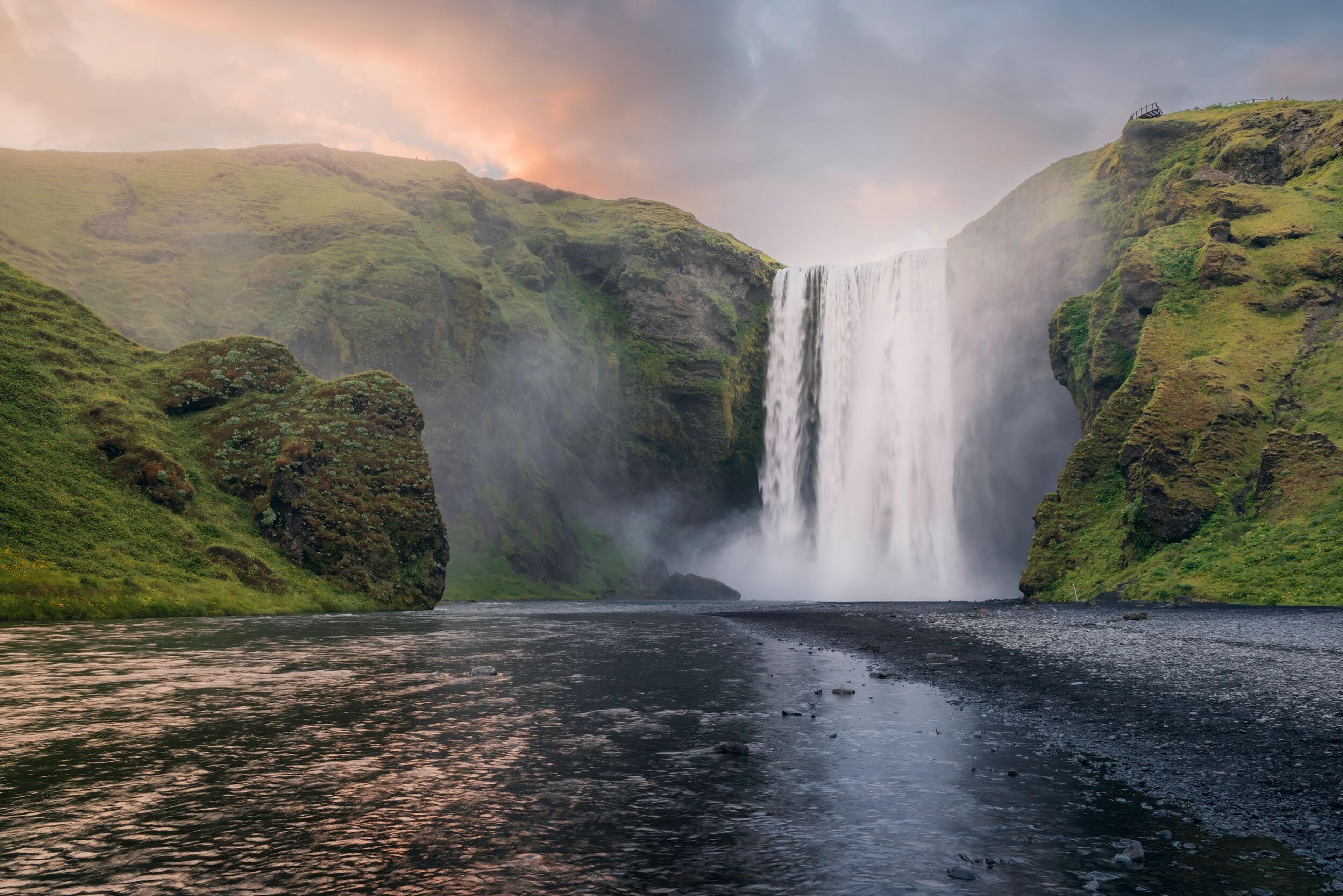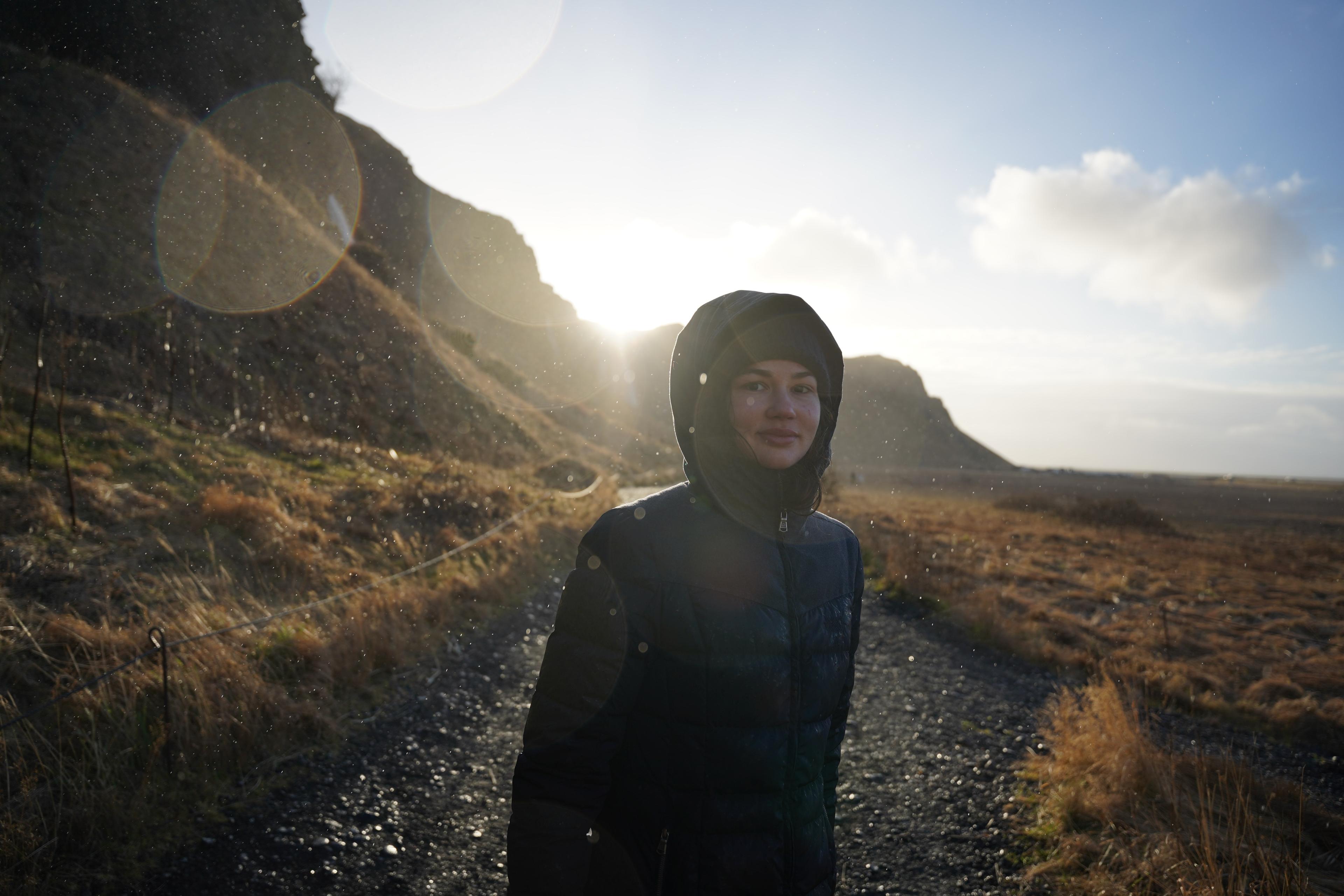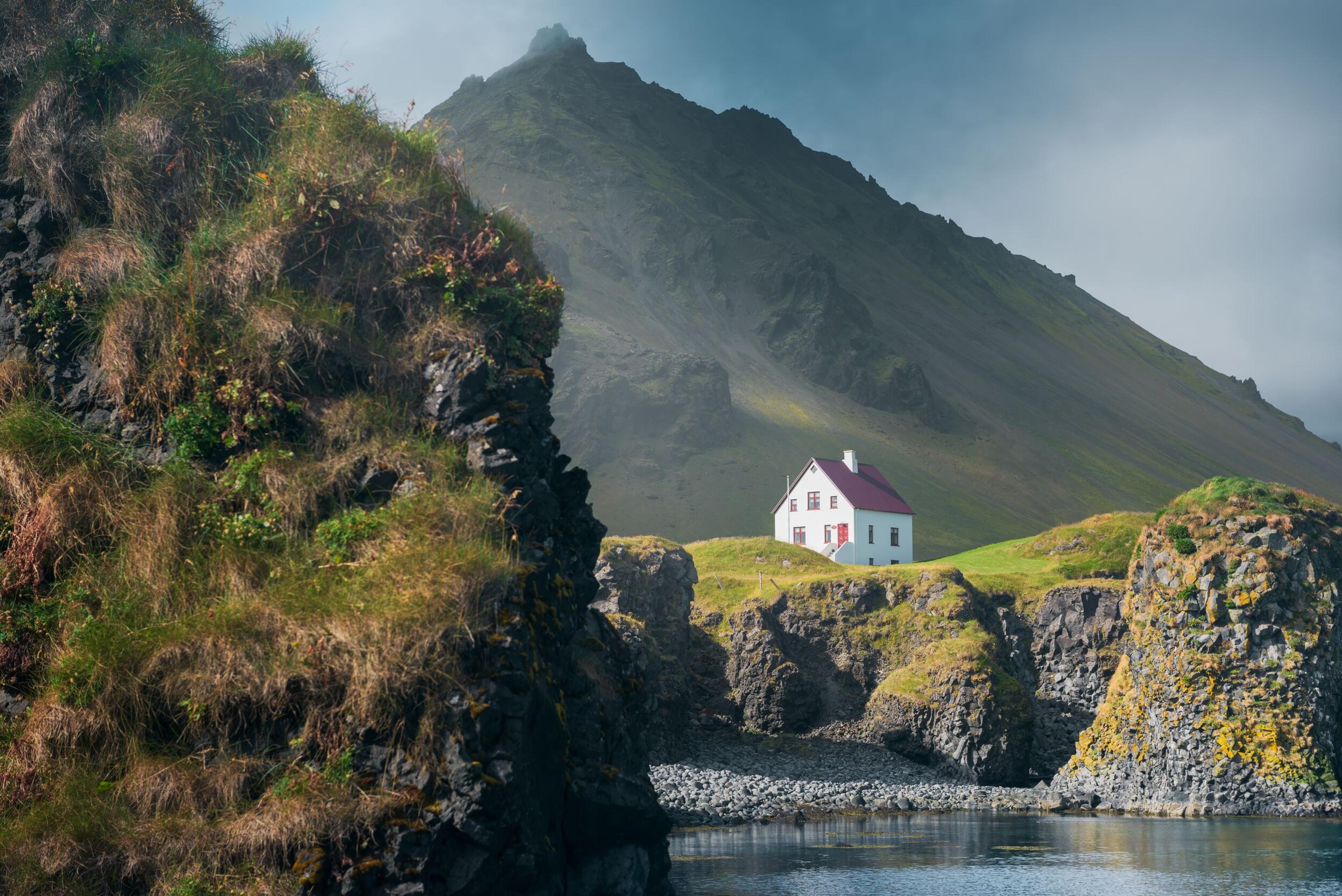Iceland, renowned as one of our planet's most active volcanic regions, experiences eruptions approximately every four years on average. However, due to their frequency, recent volcanic activities on the Reykjanes Peninsula have captured worldwide attention.
The first Reykjanes eruptions in 2021 and 2022 were nothing short of spectacular, attracting throngs of visitors to witness the awe-inspiring natural phenomena. Images of people flocking to the active volcanoes went viral, showcasing the beauty and power of nature in a dramatic display.
However, the situation took a turn as these initially tourist-friendly volcanic events began to pose threats to the local community. An eruption occurred close to a small town, leading to its evacuation and shifting the mood from excitement to concern. Remarkably, no lives were lost, thanks to Iceland's volcanologists and scientists who accurately predicted and managed these events.
The Wake of Fagradalsfjall
The 2021 eruption at Fagradalsfjall volcanic system ended an 800-year period of dormancy on the Reykjanes peninsula, Iceland’s southwestern peninsula that hosts the international airport and the world-famous Blue Lagoon.
This first eruption, named Geldingadalir, occurred in an uninhabited area and posed no direct threat to human life or infrastructure. This eruption, lasting for about six months, became a global spectacle and served as a valuable source of information for geologists and volcanologists.
Following the 2021 event, two more eruptions, Meradalir and Litli-Hrútur, occurred in the same volcanic system over the next two years. These eruptions continued the pattern of gentle effusion seen in 2021, but lasted only for three weeks each.
Their non-explosive nature allowed lava to flow smoothly, making these eruptions safe to observe from a distance. They took place in an uninhabited area, where local authorities established designated hiking trails to allow the public to witness the phenomenon safely.
As a result, tens of thousands of visitors trekked to these sites, experiencing the volcanic eruptions firsthand. For many, this journey became an intensely memorable and unparalleled travel adventure, likely etching itself as a once-in-a-lifetime experience in their memories.
The Timeline of the 2024 Volcanic Eruptions on Reykjanes: The Sundhnúkagígar Fires
In late October 2023, the Icelandic Meteorological Office recorded a surge in seismic activity near the small town of Grindavík. This increase in tremors in the Eldvörp–Svartsengi volcanic system was a clear indication of potential volcanic activity brewing beneath the surface.
Unlike previous eruptions, the data suggested that this time, the lava might be accumulating directly underneath a small town called Grindavík, home to nearly 4,000 residents. The anticipated volume of lava suggested that the upcoming eruption could be larger than its predecessors. With this in mind, a precautionary evacuation of Grindavík was ordered.
On the 18th of December, a volcanic fissure eruption began about four kilometres northeast of Grindavík, near Sýlingafell mountain, part of the Sundhnúkur crater row. The eruption was initially characterised by striking lava fountains along an approximately 4 km long fissure. However, the intensity of the eruption diminished quickly, and it concluded after just three days.
While the lava did not reach the town, large fissures opened in the ground across Grindavík. In a tragic turn of events, a local worker involved in efforts to fill one of these fissures fell into a crevasse and lost his life. Despite attempts, the recovery of his body was unsuccessful.
Following this incident, the residents of Grindavík, who had been allowed to return home for Christmas, were once again evacuated after the town was declared unsafe. This proved to be a prudent decision, as the next morning following the evacuation order, an increase in seismic activity signalled another eruption was about to take place close by.
On the 14th of January, a new volcanic fissure erupted in the same crater chain, a few hundred meters from Grindavík. Hours later, another fissure opened just north of the town, leading to lava engulfing three residential houses.
Fortunately, due to the timely evacuation efforts, the houses were all empty. By the following morning, the activity from the second fissure had ceased, and the lava flow towards the town had halted. The eruption in the initial, longer fissure also ended after less than 50 hours.
On the 8th of February, another volcanic fissure eruption began in the Sundhnukagigar crater row. The initial fissure stretched 3 kilometres, directing the lava flows westward.
The lava flowed rapidly and reached the road leading to the Blue Lagoon, one of Iceland's most famous tourist attractions. The hotel had been previously evacuated, and the spa was temporarily closed. The eruption lasted less than 24 hours and ended on the 9th of February.
On the 16th of March, a new volcanic eruption commenced in Sundhnúkagígar. This eruption began with remarkable intensity, marked by the highest magma discharge among the Sundhnúkagígar eruptions. However, as night fell, the eruption's intensity subsided, leading to a period of stable activity since then.
The lava continues to flow southward from the craters, mainly atop the lava field formed during the first days of the eruption, meaning the lava field is not expanding in size but thickening.
Elevated levels of sulfur dioxide have been observed in recent weeks around the eruption site. Additional monitoring stations are now in place. Due to wind patterns, the eruption could cause severe gas pollution, potentially spreading across the peninsula. Stay informed about gas pollution and wind directions via the provided link.
What Happens to the Grindavíkings?
The residents of Grindavík and the surrounding areas have been on an emotional rollercoaster ever since the first eruption occurred in 2021. Initially, they were thrilled to witness the raw power of nature as volcanic eruptions unfolded, metaphorically, in their backyard.
However, as events progressed, this metaphorical expression turned into a literal reality. Their initial excitement quickly turned to anxiety as the eruptions posed direct threats to their homes and safety.
Amidst this tumultuous period, the people of Grindavík have earned a distinctive nickname - the "GrindaVíkings." Their nickname has become a symbol of their enduring spirit and the solidarity that defines their community.
The impact of the recent volcanic activity has been devastating: aside from the three houses engulfed and burned down by lava, the town has been scarred by giant fissures, some tens of meters deep. The infrastructure of the town has been severely compromised, with cracked and broken walls and numerous hidden holes beneath the ground, leaving much uncertainty about what other dangers might lurk unseen.
In the face of this disaster, the real estate value in Grindavík has plummeted, rendering properties effectively worthless. Locals are forced to seek new homes permanently, upending lives and communities.
However, in these challenging times, the strength and solidarity of our society have shone through. We are known for our close-knit community spirit, especially in times of need; the people of Iceland have not failed to show up for their fellow citizens. Residents of Grindavík have been offered places to stay, ensuring that no one is left without shelter or support.
The government has also stepped in, taking measures to alleviate the financial burden on the affected families. There are ongoing efforts to pay off their now uninhabitable houses. This collective response highlights not just the resilience of the Icelandic people but also their deep commitment to supporting one another through even the most challenging times.
The Scientific Importance of the 2024 Reykjanes Eruptions
From a geological perspective, these eruptions have been invaluable in understanding the behaviour of so-called “shield volcanoes, " known for their gentle slopes and effusive eruptions.
The study of the lava and its composition has shed light on the mantle source and the tectonic activities beneath the Earth's surface. The magma we see in the most recent eruptions is distinctly different from the materials of previous eruptions.
The last volcanic activity here occurred between 1210 and 1240, concluding a four centuries of active volcanic phase. At that time, a different type of magma caused the prolonged volcanic activity. The question now is, what capabilities does this completely different magma type possess?
At present, it seems we are at the beginning of another lengthy volcanic period, and the future is still very much uncertain. The duration of the eruption phase can be inferred from the volcanic activity patterns of the past few thousand years. However, this is the first time we are experiencing such an event, living through every hour and day of it, while experts document and interpret incoming signals around the clock, utilising valuable scientific data, such as the chemical composition of the magma that surfaces.
There is still much to discover in these areas, with many currently working on it. When did the magma feeding the current eruption form, and why is its chemical composition so different from previous ones? These may help us better understand what is happening and why in such a complex tectonic and volcanic event. Decision-makers and society await answers and news, most importantly, when another volcanic eruption can be expected.
We are not blessed with the ability to see into the future; hence, we can only rely on what observations and scientific data show. This information is crucial for improving predictive models for future volcanic activities and understanding volcanic hazards in similar geological settings.
It's important to note that these recent volcanic activities have fostered international scientific collaboration, with experts from various countries contributing to the research and have also accelerated advancements in volcanic monitoring technology and data analysis, highlighting the importance of ongoing research and collaboration in the field of volcanology.
The Ecological Impact
The recent eruptions offer a unique opportunity to observe the ecological transformations that can arise from volcanic activity and how local ecosystems adapt to volcanic disturbances.
In terms of air quality and climate, these eruptions have had minimal impact, given their effusive nature and relatively low emission of volcanic gases.
As the lava flows from these eruptions cooled and solidified, they began to lay the foundation for new landscapes. However, while creating new landforms and potentially enriching the soil with minerals over time, the lava flows initially destroyed existing habitats for plants and wildlife, leading to a loss of biodiversity in the affected areas. However, these dramatic changes can offer valuable insights into ecological succession and resilience.
Some of these eruption sites have also become tourist attractions and hold great educational value, enhancing public and scientific understanding of Earth sciences.
The Economical Impact
The Reykjanes eruptions had a varying impact on tourism and the economy, influenced heavily by the global media portrayal.
In 2021, during the peak of the COVID-19 pandemic, the initial eruptions had little effect on tourism due to existing travel restrictions. However, as travel resumed in 2022 and 2023, the Reykjanes eruptions emerged as a significant tourist attraction. The eruption sites drew thousands of visitors from around the globe, boosting Iceland's post-pandemic economic recovery.
The situation shifted in late 2023 and 2024 when eruptions threatened infrastructure, notably the town of Grindavík and the visitors' beloved Blue Lagoon. International media coverage, often exaggerated, heightened perceptions of risk, leading to an uptick in travel cancellations. Despite no disruptions to air traffic or any impact on tour operations whatsoever, this media-driven perception adversely affected our tourism industry.
The Impact of the 2024 Volcanic Eruptions on Iceland’s Overall Safety
The Reykjanes eruptions, aside from impacting the residents of Grindavík, have had little effect on Iceland's tourism or on local’s lives in general. The nearby Blue Lagoon has been taking brief closures intermittently as a precautionary measure, but apart from these temporary shutdowns, the spa has remained largely unaffected. Construction is underway for a new road over the lava fields, and in the meantime, the Blue Lagoon remains accessible via an alternative route.
The most notable disruption caused by the eruptions was a temporary warm water shortage in the Reykjanes area following the February eruption. This occurred when the flowing lava overran water pipes, cutting off the supply. Remarkably, the response to this infrastructure damage was swift and efficient. New pipes were installed at an astonishingly fast pace and completed ahead of schedule within three days. This rapid response led to jokes that the world's best plumbers must be working in Iceland, highlighting the resilience and resourcefulness of the local services.
Reykjavík and the international airport have remained unaffected by these volcanic events. Some tremors have been felt in the capital, but these have been mild, only causing minor movements like shaking plants in apartments. These mild shakes in Reykjavík stand in stark contrast to the more severe seismic activity experienced in Grindavík.
Is Gas Pollution a Danger?
During active eruptions, gas pollution poses a concern in the immediate area of the eruption site. The range of gases released, including sulfur dioxide, carbon dioxide, and other volcanic gases, can be harmful, particularly for people with respiratory issues or sensitivity to air quality.
However, Reykjanes peninsula, being largely uninhabited and known for its windy conditions, assists in swiftly dispersing these volcanic gases and minimising their concentration in the air. This means that although volcanic gases are highly concentrated at the eruption site, the smoke dissipates rapidly, posing no issues just a few kilometres away.
Occasionally, wind patterns shift and direct the gas pollution towards populated areas, including Reykjavík. In such instances, residents, especially those suffering from respiratory sensitivities, might experience discomfort. Real-time pollution maps are available to keep both residents and visitors informed about air quality.
Volcano Tourism Amidst Changing Dynamics of Iceland's Eruptions
Volcanologists suggest that the current phase of increased volcanic activity in Iceland could continue for an extended period, possibly lasting many years or even decades. Tourism in Iceland has remained steady, with some visitors on flights experiencing the remarkable sight of eruptions from their airplane windows. The allure of witnessing volcanic eruptions first-hand has led to the rise of 'volcano tourism', drawing numerous visitors to Iceland.
However, the 2024 eruptions have created a different context compared to those between 2021 and 2023. Earlier eruptions allowed for the quick establishment of official hiking routes to the sites, facilitating managed and safe viewing experiences. The recent eruptions, in contrast, have had an impact on local infrastructure and affected the lives of about 4,000 residents. Consequently, there has been a call from the local community for visitors to be mindful and considerate in their approach to these events.
The unpredictable nature of the most recent volcanic activities, characterised by ground fissures and eruptions with little warning, has led authorities to restrict access to the eruption sites, prioritising public safety in light of the potential risks. Authorities are urging the public to adhere to all safety measures and respect closures. This respectful cooperation is crucial for public safety and supports the authorities in managing the situation effectively.
Nonetheless, safe viewing opportunities still exist at a distance. When an eruption takes place, spots like Perlan and Sky Lagoon offer vantage points for observing the new eruptions.
The Traveler’s Perspective on 2024 Volcanic Eruptions in Iceland
From the view of locals and travellers, the volcanic activity on the Reykjanes Peninsula is expected to present a pattern of intermittent eruptions varying in duration. This activity weaves into the fabric of life here.
Eruptions may light up the horizon for a day or gently flow for months. Although accompanied occasionally by moderate seismic tremors, the area remains free from the threat of major earthquakes. This geological setting, where the earth's plates slowly drift apart, ensures a calmer seismic temperament compared to regions marked by converging tectonic forces.
Reflecting on the last three years, which have witnessed seven volcanic eruptions, it's noteworthy how life in Iceland, particularly in tourism and daily activities, has remained largely undisturbed.
Even the bustling city of Reykjavík and beloved tourist routes like the South Coast, Golden Circle, and Snaefellsnes Peninsula continue to thrive, unaffected by these natural events. The occasional closure of attractions like the Blue Lagoon has been but a minor hiccup.
Travellers are thus welcomed with open arms to Iceland, a land where nature's drama unfolds in the backdrop.
Watch Iceland's Volcanic Eruptions Live
While the eruption sites remain closed, you can still witness the action firsthand through live webcams strategically placed in key locations. Below is a mosaic view featuring four webcams, allowing you to immerse yourself in the spectacle. For additional links to more live feeds, check out the FAQ section below this article.
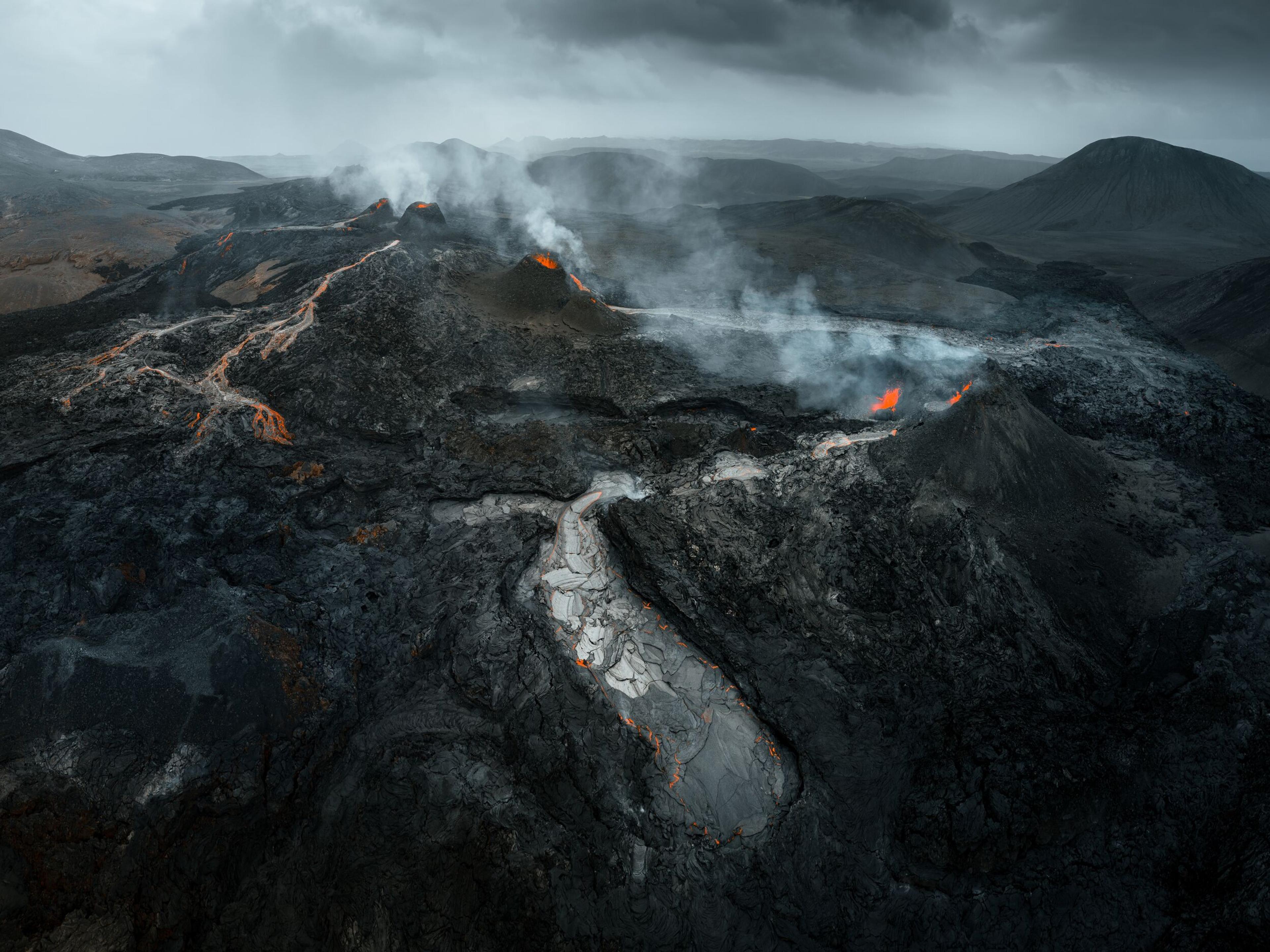
Questions and Answers about the 2024 Iceland Volcano Eruptions
Various webcams are available for live viewing of ongoing volcanic eruptions. These webcams also help determine if an eruption is currently happening. When a new eruption occurs, the cameras are promptly adjusted to display the new site. Therefore, if the camera views do not show any eruption, it indicates that there is no active eruption on the Reykjanes Peninsula.
The recent volcanic activities on the Reykjanes Peninsula have garnered global attention due to their frequency and the nature of these events. Since 2012, there is a volcanic eruption every few months and the frequency is increasing, suggesting a significant shift in geological activity in the region.
Yes, the first eruptions in the region occurred in 2021 and 2022 and were notable, attracting many visitors. The 2021 eruption ended an 800-year dormancy period on the Reykjanes peninsula.
Yes, volcanic activity, including the recent eruptions, is expected to continue and is considered a normal aspect of life in Iceland.
The residents of Grindavík are nicknamed "GrindaVíkings," symbolizing their enduring spirit and solidarity during the volcanic crises.
These eruptions are crucial for understanding shield volcanoes, the mantle source, tectonic activities, and improving predictive models for future volcanic activities. Notably, the recent series of eruptions on the Reykjanes Peninsula offers an unprecedented opportunity to observe the development of a shield volcano from its initial stages. This is significant because it's the first time in recorded history that scientists have the technology and methodologies to closely monitor and study the evolution of a shield volcano in real time. This unique scenario provides invaluable insights into the formation processes of shield volcanoes, their eruption patterns, lava flow dynamics, and the overall impact on the surrounding geological landscape. The data gathered from these eruptions could revolutionize our understanding of volcanic systems and contribute significantly to global volcanic research.
Gas pollution is a concern near the eruption site, but the windy conditions on the Reykjanes peninsula help disperse gases quickly, minimizing risks.
Volcanologists suggest that the current phase of increased activity may persist for years or even decades, possibly indicating a shift to shield volcano-type behavior.
Travelers view the volcanic activity as part of Iceland's appeal, with intermittent eruptions varying in duration, and life, especially in tourism, remains largely undisturbed.
Given the recent pattern of frequent eruptions since 2021 and expectations that this activity may continue for years or even decades, it is reasonable to anticipate that the volcano on the Reykjanes Peninsula could erupt again within a relatively short timeframe, possibly within weeks, or months. However, it's important to note that predicting the exact timing of volcanic eruptions is a complex task, even with advanced monitoring and analysis. Volcanologists rely on various indicators, including seismic activity, ground deformation, and gas emissions, to forecast eruptions, but these predictions often come with a degree of uncertainty. Additionally, while the Reykjanes Peninsula volcano is the closest active volcano to Reykjavík, it is still quite far from the city, which helps mitigate direct risks to Reykjavík from the eruptions.
The recent effusive eruptions on Iceland's Reykjanes Peninsula, while not explosively dangerous, have led authorities to implement precautionary measures, including localized evacuations around the eruption sites. These safety measures cover a few square kilometers, ensuring the protection of nearby residents. Despite these eruptions, the wider Reykjanes Peninsula and Iceland remain safe, with minimal impact on tourism and daily life. The frequent volcanic activity has only caused temporary closures of the nearby Blue Lagoon spa. Continuous monitoring and timely alerts by Icelandic authorities help in minimizing risks and managing public safety effectively.
The duration of volcanic activity in Iceland varies greatly depending on the specific eruption and geological conditions. Some eruptions may last a few days, while others for months or even years. Ongoing scientific monitoring provides better estimates as events unfold.
Generally, it is safe to travel to Europe despite volcanic activity in Iceland. The impact of volcanic eruptions on air travel and the wider region largely depends on the nature of the eruptions. Most recent eruptions in Iceland have been localized and had zero impact on broader European air travel or safety.
Iceland's residents have adapted to their country's dynamic geological environment, fostering a strong sense of community and resilience. They are supported by robust emergency response systems, which enable them to live with both admiration for the natural beauty of their surroundings and a readiness for potential evacuations due to volcanic activity.
The response of individuals to volcanic events varies based on their personal experiences and proximity to the events. For example, residents of Grindavík initially found the 2021 eruptions fascinating when the eruption site was at a safe distance. However, the earthquakes leading to these eruptions affected them more significantly than those in Reykjavík, where tremors were barely felt. While some people found the geological activity exciting, others experienced fear and anxiety.
The situation became particularly challenging for Grindavík residents when an eruption occurred closer to the town, necessitating evacuation and significantly altering their lives. Some residents wish to return after volcanic activity decreases, while others prefer not to return at all.
Icelanders, in general, are accustomed to volcanic eruptions but naturally prefer to witness them from a safe distance and in uninhabited areas. Despite the history of devastating eruptions in Iceland, these natural events are accepted as part of life on the island. This acceptance is coupled with a developed resilience to the unpredictability of nature, highlighting the Icelandic spirit of adapting to and coexisting with their unique environment.
Related Articles
See all articlesRecommended tours
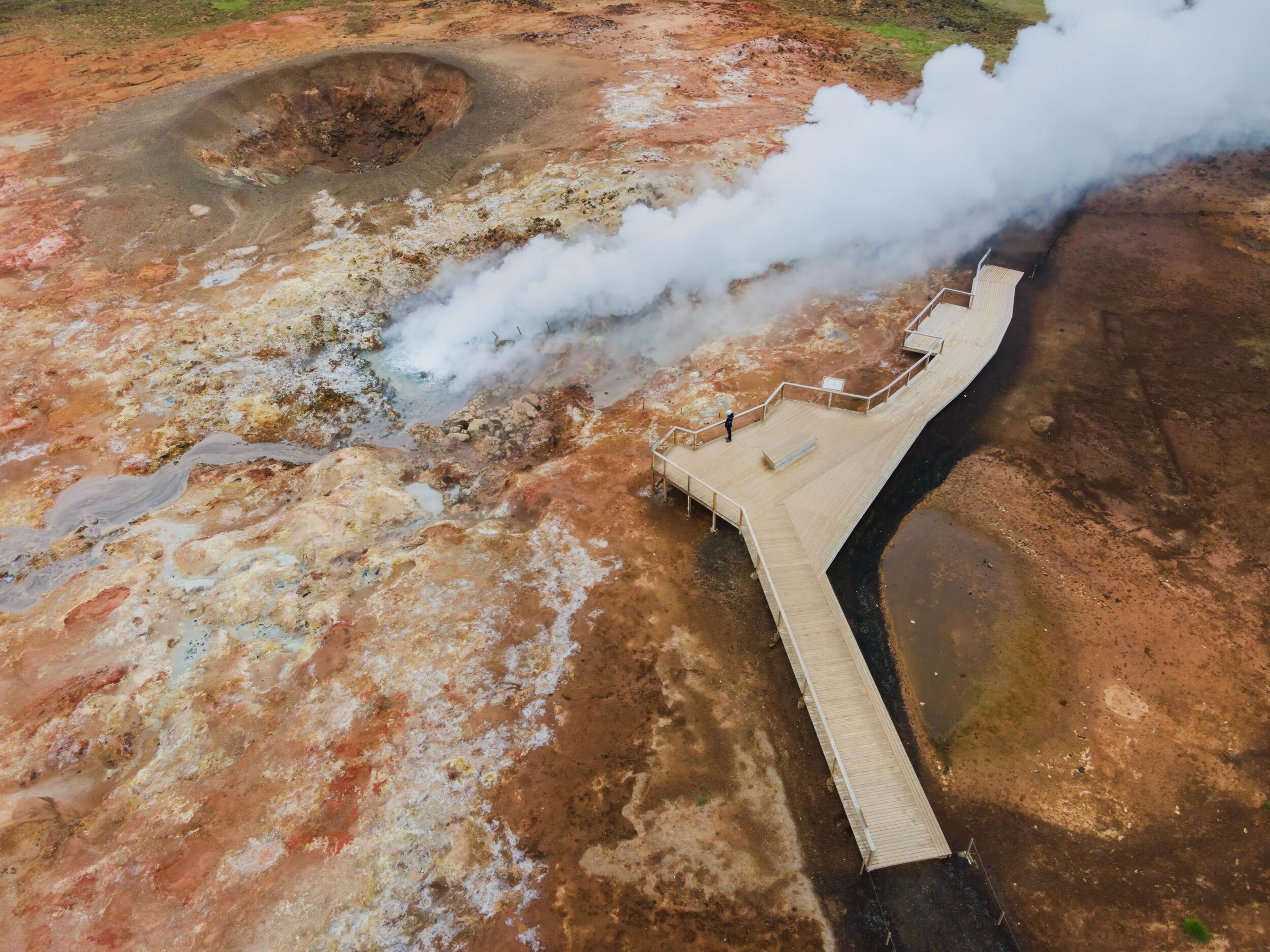
Volcanic Wonders of Reykjanes Geopark
The Reykjanes Geopark is home to a striking, dramatic landscape comprising lava fields, volcanic craters, geothermal waters, and lava caves. This exciting day tour includes visits to the latest eruption site, the Seltún geothermal area, the bubbling mud pools of Gunnuhver, and the Bridge Between Two Continents!

Volcanic Wonders and the Blue Lagoon
Embark on an extraordinary exploration of volcanic marvels with our Volcanic Wonders & the Blue Lagoon tour. Journey through the UNESCO-listed Reykjanes Geopark, situated atop the tectonic plate boundaries, and witness the raw beauty of Iceland's volcanic landscapes, culminating in a relaxing visit to the iconic Blue Lagoon.
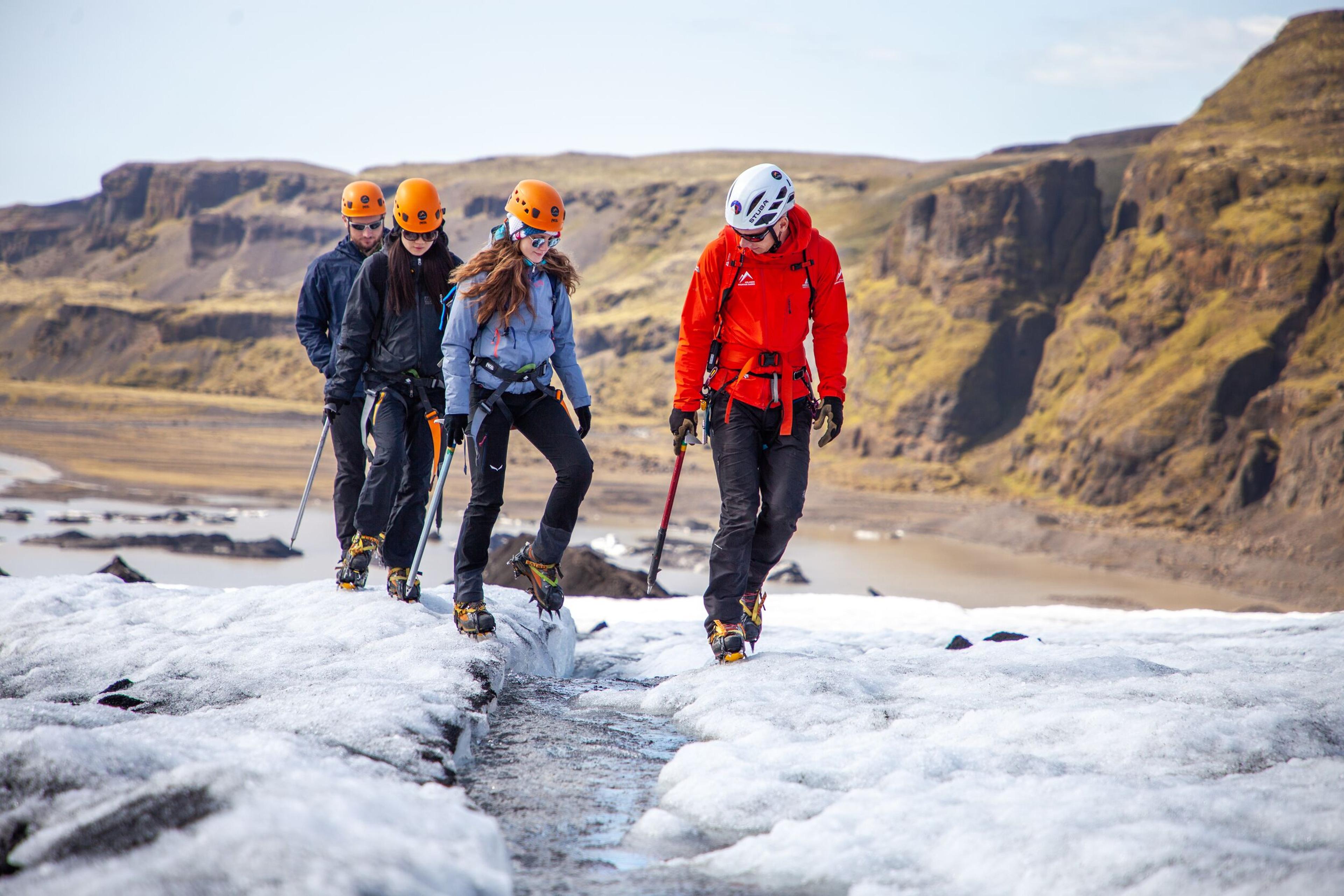
Glacier Discovery
Join this easy, short glacier walk and explore the beautiful, icy wonderland of Iceland’s Sólheimajökull Glacier. Enjoy the fresh air, interesting shapes and hues of the ice and marvel at the vast and remote slice of south Iceland. Led by an expert guide, get up close and personal with one of the country's most famous glaciers!
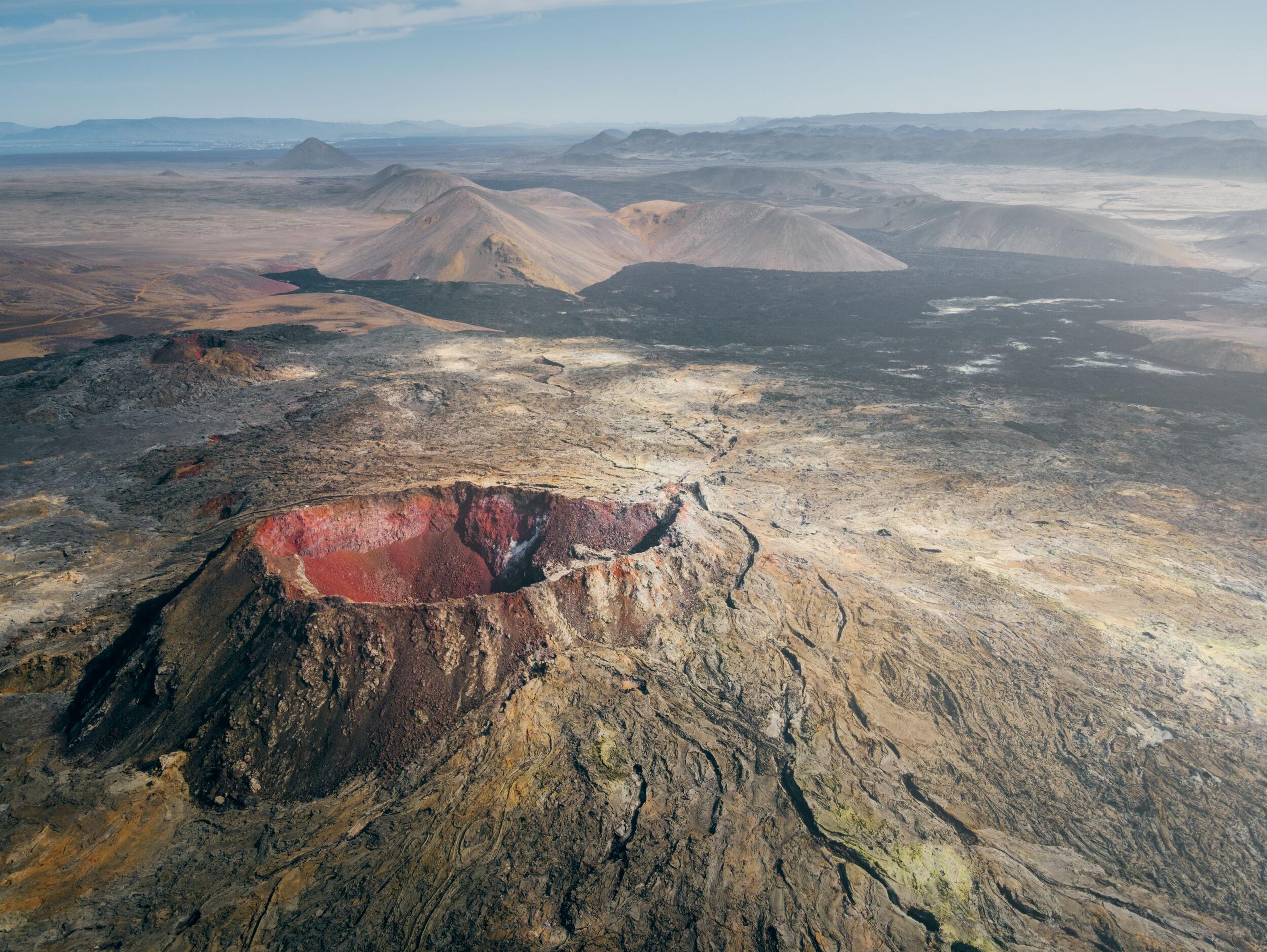
Volcanic Wonders & the Sky Lagoon
Discover Iceland's geothermal heart in the UNESCO recognized Reykjanes Geopark, a land that way created where continents drift apart. Journey through the awe-inspiring volcanic landscapes and explore the freshly-formed lava fields of Fagradalsfjall Volcano. Complete your day with a relaxing and rejuvenating spa experience at Reykjavík’s newest luxury bath, the Sky Lagoon.
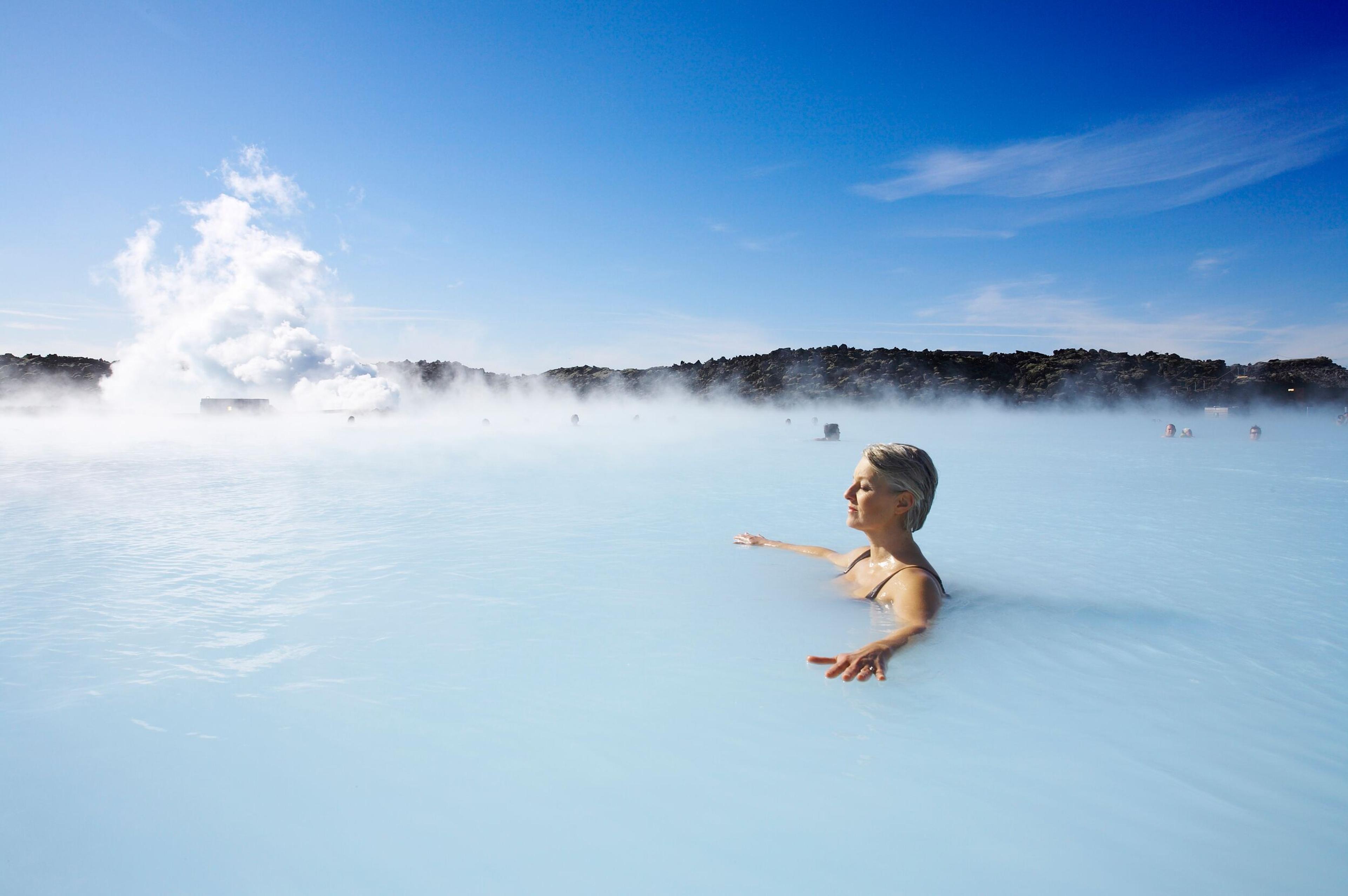
- Best seller
- Popular
Blue Lagoon & Northern Lights
Enjoy a perfect winter day in Iceland! Experience the best of Iceland with this package of two of the island’s most popular tours in one day! Soak in the milky blue healing water of the Blue Lagoon, which is one of Iceland's most famous tourist attractions and is considered by many to be a once-in-a-lifetime experience and an unmissable part of a visit to Iceland. After your return to Reykjavík, a guide will lead you on a search for the elusive northern lights! Watching the lights dance and flicker in the sky, changing shape and colour, is incredible. Prepare to be dazzled!
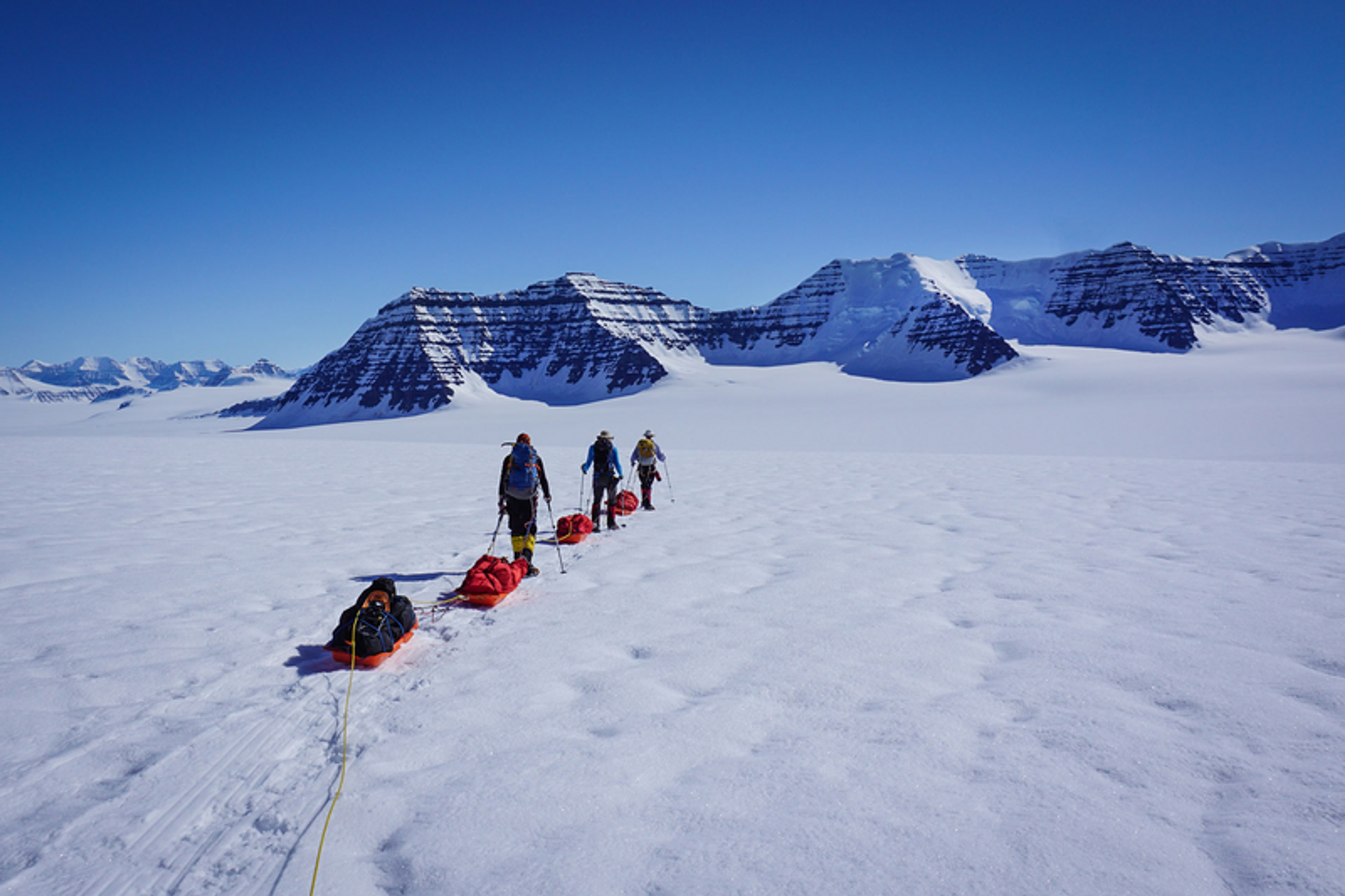
Mt Gunnbjörn, the Highest Peak in Greenland
Are you dreaming of an Arctic adventure of a lifetime? This 5-day tour has you scaling the highest peak of the Arctic (3694 m/12120 ft). Mt. Gunnbjörn has been called the 8th continental peak due to its massive size, and it beckons climbers from around the world. On the east coast, where towering mountains rise from the Greenland icecap, the conditions are pristine and similar to those in Antarctica. There’s nothing quite like challenging yourself to climb in one of the most isolated areas of the north, with the fresh Arctic air and stark white snow. An experienced and qualified guide will lead the group, keeping participants safe and informed. This is not a trek for a beginner as the hike is considered strenuous, and participants should have mountain climbing experience and be prepared to camp for four nights. Mt. Gunnbjörn is easily accessible on a ski plane from Iceland. Once in the Watkins Mountains, we set up a comfortable base camp at the foot of the mountain. To make the summit day more manageable, we establish one camp on the way to the summit. The climb can be done on snowshoes, with the last part done on crampons.


